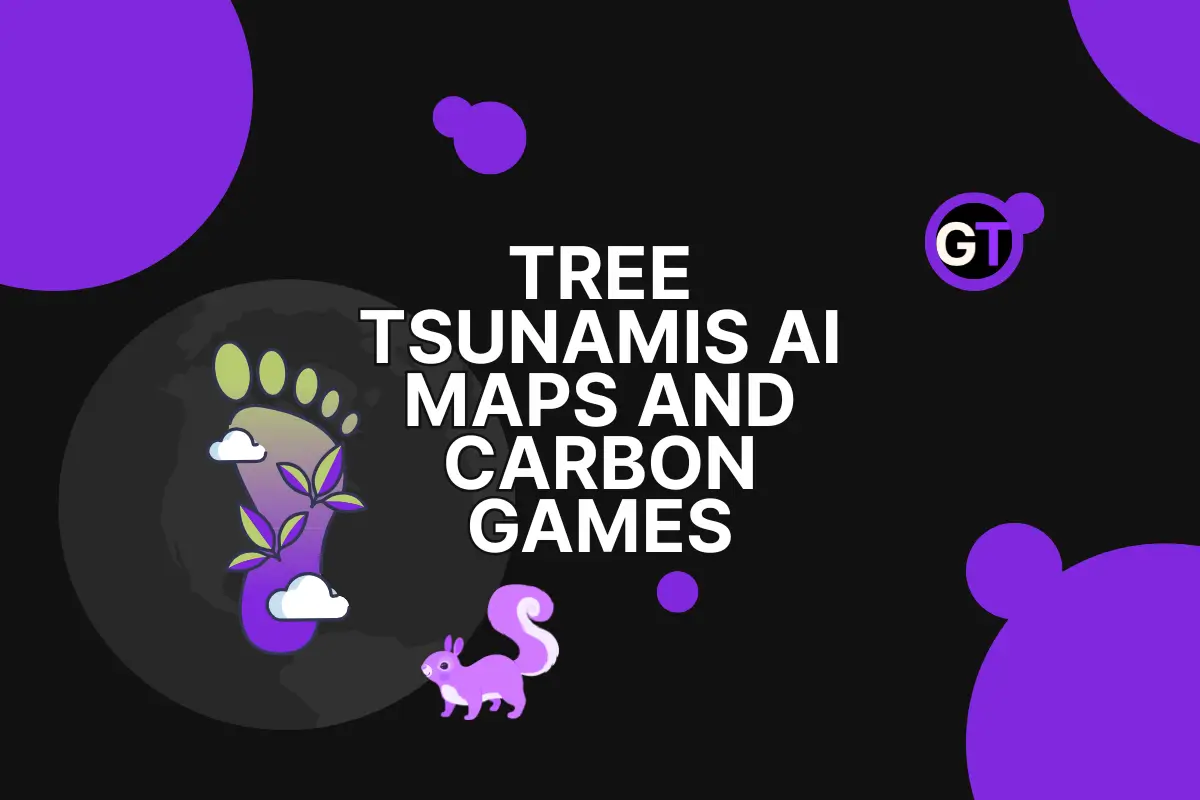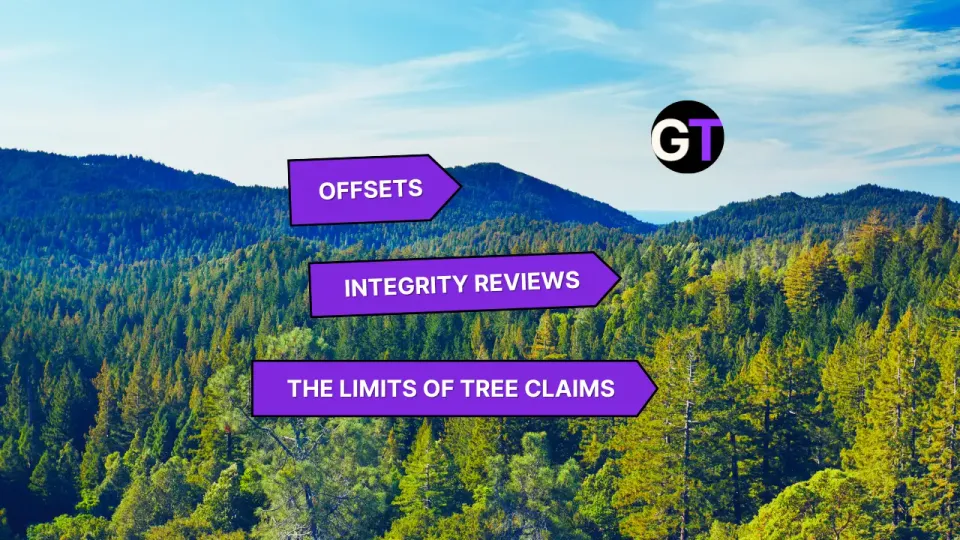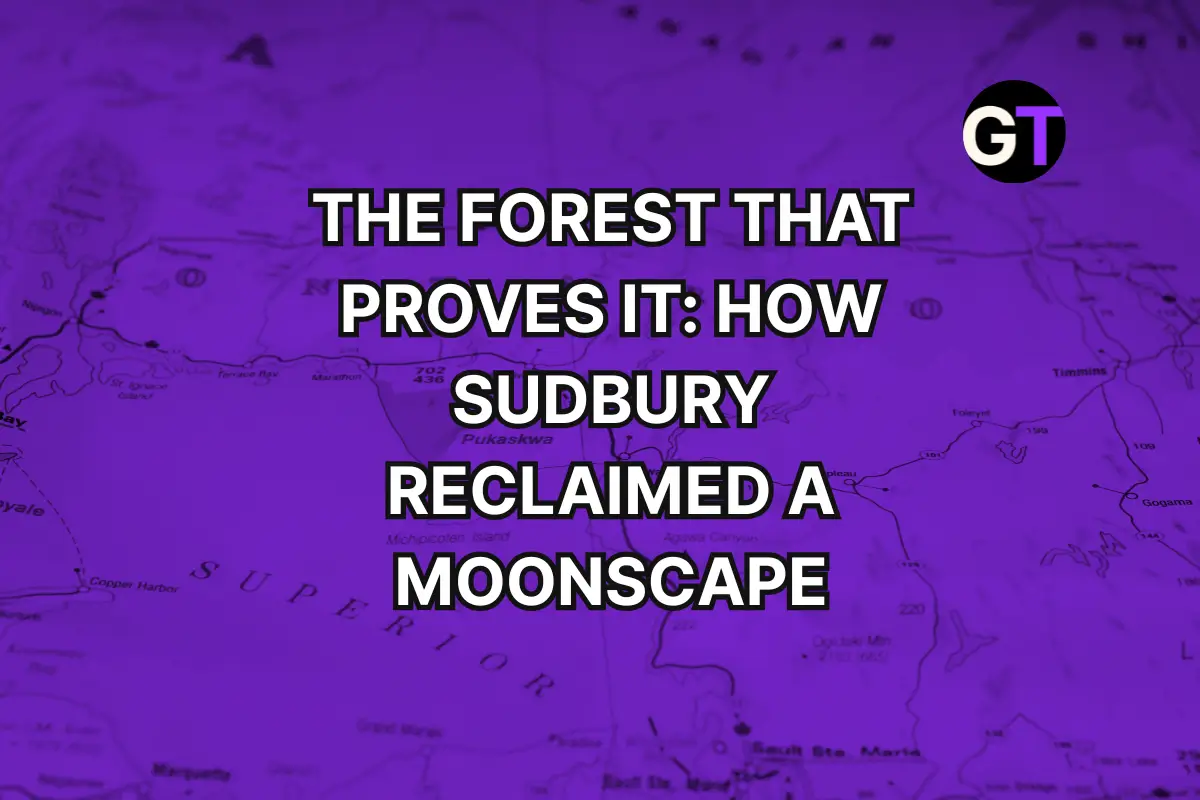Tree Tsunamis, AI Maps, and Carbon Games
From AI satellites to Senegal’s sprint and China’s pollen backlash—where global reforestation meets data, drama, and climate ambition.

Senegal Launches Reforestation Caravan With Million‑Tree Push
President Bassirou Diomaye Faye kicked off Senegal’s 2025 National Reforestation Caravan in the Mbao classified forest, calling on citizens to join a massive effort to plant one million trees in 48 hours. Marking National Tree Day, Faye planted mango and baobab trees as symbols of food sovereignty and sustainable development, framing reforestation as “environmental patriotism” and a cornerstone of the Senegal 2050 Vision for a green, low‑carbon future. The caravan will tour the country, rallying communities to restore ecosystems and safeguard natural heritage.
💬 Can a 48‑hour, million‑tree sprint spark long‑term climate resilience? Is such a feat even possible?
👉👉 Read more via Presidence.sn
Pinar del Río Expands Reforestation Efforts Amid Fire and Hurricane Losses
Cuba’s westernmost province is ramping up its 2025 reforestation campaign, aiming to plant 2,715 hectares of forest and fruit trees by September—about 250 hectares more than last year. Pinar del Río, already the country’s second most forested province, will focus heavily on pine, with 1,200 hectares planned, supported by 11 nurseries, including four high-tech facilities. After a tough year of hurricanes and severe forest fires, officials say the province is maintaining its policy of planting twice as much as it cuts, targeting over 2,500 hectares annually to keep forest cover at nearly 50%.
💬 Can doubling down on replanting keep pace with storms and fire season?
👉👉 Read more via Agencia Cubana de Noticias
Mangrove Reboots: Can Blue Carbon Save Our Coasts?
Mangroves might be coastal wallflowers, but they're pulling serious weight in the climate game—absorbing carbon, buffering storm surges, and nurturing marine life. At a recent policy forum in the Philippines, experts warned that despite their superpowers, the country’s mangroves are vanishing fast, thanks to fishpond sprawl and shaky local governance. Yet with the right funding, zoning laws, and community-led action, mangroves could deliver climate wins worth four times upland reforestation—plus a boost to biodiversity, fisheries, and even eco-tourism.
💬 Could a mangrove revival be the climate-coastal combo we didn’t know we needed?
👉👉 Read more via BusinessMirror
AlphaEarth Foundations Maps Earth in Unprecedented Detail
Google DeepMind’s new AI model, AlphaEarth Foundations, stitches together petabytes of Earth observation data into a unified digital map of the planet, offering scientists a precise, consistent way to track everything from crop health to coastal change. By compressing vast datasets into efficient “embeddings,” the system slashes storage needs while boosting accuracy—delivering on-demand, 10‑meter‑scale maps that partners like FAO and MapBiomas are already using to monitor biodiversity and deforestation. With 1.4 trillion data points per year now available via Google Earth Engine, it’s being hailed as a game‑changer for conservation and climate research.
💬 Could AI‑built planetary maps become the new baseline for how we understand—and save—Earth?
👉👉 Read more via DeepMind
China’s Green Wall vs. Pollen: Did Reforestation Backfire?
China’s Great Green Wall was supposed to stop deserts in their tracks—and it did. But after planting 66 billion trees to tame the Gobi and Taklamakan, a new storm rolled in: allergies. Fast-growing species like artemisia, willow, and poplar now trigger hay fever, asthma, and eye-watering chaos for nearly a third of residents in regions like Inner Mongolia and Shaanxi. Authorities are scrambling to swap in less sneezy trees like ginkgos, but with billions already spent, is it too late to unplant the problem?
💬 Can China fix its reforestation win without triggering a full-blown pollen mutiny?
👉👉 Read more via ZAP
Forest Fix or Climate Shell Game? Rethinking Nature-Based Carbon Solutions
Tree-planting sounds great until you realize most offset programs are built on shaky math, questionable permanence, and forests that were never at risk to begin with. A new study led by the University of Utah and UC Santa Barbara lays out four major flaws in today’s nature-based climate solutions—and proposes a policy reboot. Think tougher standards, better science, and an end to “ghost” credits.
💬 Are nature-based offsets a vital climate fix—or just a clever way to feel good while doing less?
👉👉 Read more via UCSB
Mapping Forest Hotspots: Where Trees Do Double Duty for Climate and Water
A new study comparing forests in the southeastern U.S. (SEUS) and Pacific Northwest (PNW) finds that not all trees are created equal—at least when it comes to juggling carbon storage and water yield. While the PNW shines in co-delivering both ecosystem services, the SEUS needs more strategic forest management to boost multifunctionality. Preservation and ecological forestry came out on top for service delivery, making a strong case for land-use policies that don’t just plant trees—but plant them smart.
💬 Can hotspot maps help forest managers turn climate goals and water needs into a single winning strategy?
👉👉 Read more via MDPI
China’s Forests: A Tale of Two Landscapes, and the Data Behind Them
Returning to China for a moment, the nation’s forests are undergoing a dual transformation—some parts are rebounding into lush, connected ecosystems, while others are fragmenting under urban sprawl and farmland creep. Enter the Ecological Land Evolution Index (ELEI): a new tool blending machine learning and spatial regression to map and decode the country’s forest gains and losses from 2000 to 2020. It turns out slope, elevation, and the ambitious Grain for Green program are driving restoration, while cities, farms, and roads are carving up forested terrain. The solution? Smarter, site-specific forest strategies that work with the land—not against it.
💬 Can China’s forests grow back better without trading green space for grey infrastructure?
👉👉 Read more via ScienceDirect
What’s Missing in the Forest? Dark Diversity and the Mystery of Managed Ecosystems
Not all biodiversity loss is visible. This new global study dives into “dark diversity”—the species that should be in a forest but mysteriously aren’t. Using a mega-dataset across forest types and management practices, researchers found that both how much forest exists (coverage) and how it’s chopped up (fragmentation) subtly shape which plants thrive—or silently vanish. Turns out, short-rotation tropical plantations are biodiversity roller coasters, while temperate forests respond very differently. The twist? Managing forests without tracking their hidden ecological vacancies might mean restoring only half the ecosystem.
💬 Can conservation really succeed if we don’t count what’s not there?
👉👉 Read more via ScienceDirect
The Nature Conservancy Plants 2.5M Trees in Minnesota’s Northwoods
The Nature Conservancy hit a record this year, planting 2.5 million trees across six counties in northern Minnesota—bringing their state total to over 13 million since 2005. Partnering with the U.S. Forest Service, state agencies, tribal groups, and local counties, TNC focused on biodiversity and climate resilience, mixing 14 hardy native species to future-proof Minnesota’s forests. The initiative spanned scenic highways, water corridors, and even wildfire-scorched land, emphasizing restoration and moose habitat enhancement. Bonus: it all ran on the grit of 65 highly skilled guest workers from Latin America.
💬 Can Minnesota’s mass reforestation effort offer a blueprint for climate-smart forestry in a warming, wildfire-prone world?
👉👉 Read more via The Nature Conservancy

Edited by Chris Harris

This work is licensed under a
Creative Commons Attribution 4.0 International License.





